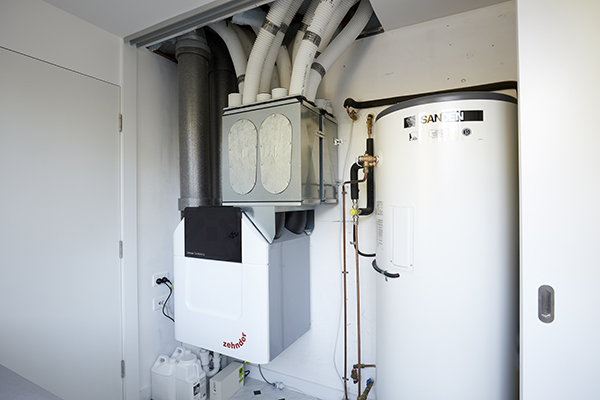Checking out the Conveniences of Heat Recovery Ventilation for Energy Efficiency in Homes
Heat Recovery Ventilation (HRV) systems offer home owners a sensible strategy to boosting energy effectiveness. By recovering heat from outgoing air, these systems can considerably reduce cooling and heating costs. Furthermore, they offer a consistent supply of fresh air, enhancing interior air quality and convenience levels. As home owners take into consideration lasting alternatives, comprehending the subtleties of HRV systems comes to be increasingly crucial. What variables should one review before making such an investment?
Comprehending Heat Recovery Ventilation Equipments

Exactly How HRV Boosts Indoor Air Top Quality

Power Savings: The Financial Benefits of HRV
Making the most of energy effectiveness, heat recovery ventilation (HRV) systems use significant monetary benefits for home owners. By recuperating and reusing warm from exhaust air, HRVs noticeably lower heating & cooling prices. This modern technology can lead to power savings of as much as 30%, depending upon climate and usage patterns. Property owners typically observe minimized utility bills soon after installment, making HRVs a monetarily smart financial investment gradually. In addition, many regions provide motivations or rebates for energy-efficient upgrades, even more enhancing the monetary appeal. As power prices remain to climb, the cost-effectiveness of HRVs becomes significantly clear. Generally, the consolidation of HRV systems not just advertises energy efficiency but additionally adds to lasting economic cost savings for households.
The Environmental Effect of Heat Recovery Ventilation
A substantial ecological benefit of heat recovery ventilation (HRV) systems exists in their capability to reduce total power consumption. By redeeming warmth from exhaust air and moving it to incoming fresh air, HRV systems minimize the demand for energy-intensive heating and cooling approaches. This reduction in energy need contributes to decrease greenhouse gas exhausts, as much less nonrenewable fuel source is called for to preserve comfy interior temperature levels. Furthermore, HRV systems boost interior air high quality by effectively exchanging stale air with fresh outdoor air, decreasing reliance on mechanical air conditioning systems that can damage the atmosphere. Overall, the execution of HRV systems sustains sustainable living practices and straightens with global efforts to navigate to this site fight environment adjustment by promoting power efficiency in household setups.
Selecting the Right HRV System for Your Home
Just how can homeowners assure they select the best heat recovery ventilation (HRV) system for their requirements? Initially, they ought to evaluate their home's dimension and layout, as these factors affect air movement demands. Next off, evaluating the system's efficiency rankings is essential, as greater scores suggest far better efficiency and power financial savings. Home owners ought to also consider setup and maintenance costs, comparing various brand names and models for value. In addition, it is necessary to review noise levels, as some systems operate even more quietly than others. Consulting with heating and cooling specialists can give tailored recommendations based upon particular home conditions. Finally, analyzing individual evaluations and warranties can help in making a notified choice, making sure that the picked HRV system successfully enhances indoor air top quality and energy efficiency.
Frequently Asked Questions

Just how Usually Should I Clean or Keep My HRV System?
The frequency of cleaning or keeping a heat recovery air flow (HRV) system typically relies on usage and environmental variables. Typically, it is suggested to carry out maintenance every 6 months to assure peak efficiency and air high quality.

Can HRV Equipments Aid Decrease Humidity Levels Inside?
HRV systems can successfully reduce interior moisture levels by trading stagnant, humid air with fresh, drier air from outside. HRV Heat Recovery Ventilation. This procedure assists maintain a well balanced interior environment, improving convenience and preventing moisture-related problems
What Is the Life-span of a Normal HRV System?
The life-span of a typical heat recovery ventilation (HRV) system varies, normally lasting between 10 to 15 years. Routine maintenance can prolong its effectiveness and operational life, ensuring peak performance throughout its usage duration.
Are There Any Type Of Noise Worry About HRV Equipments?
Sound concerns with HRV systems can occur, especially from follower procedure. However, many contemporary systems are browse around this site created to decrease audio degrees, ensuring they run silently while preserving effectiveness, which attends to possible disruptions in living atmospheres.
Can I Mount an HRV System Myself, or Do I Required a Specialist?
The specific contemplated whether to install the heat recovery ventilation (HRV) system personally or employ an expert. Typically, while do it yourself setup is possible, knowledge Related Site warranties correct functionality and compliance with regional building regulations, enhancing system efficiency.